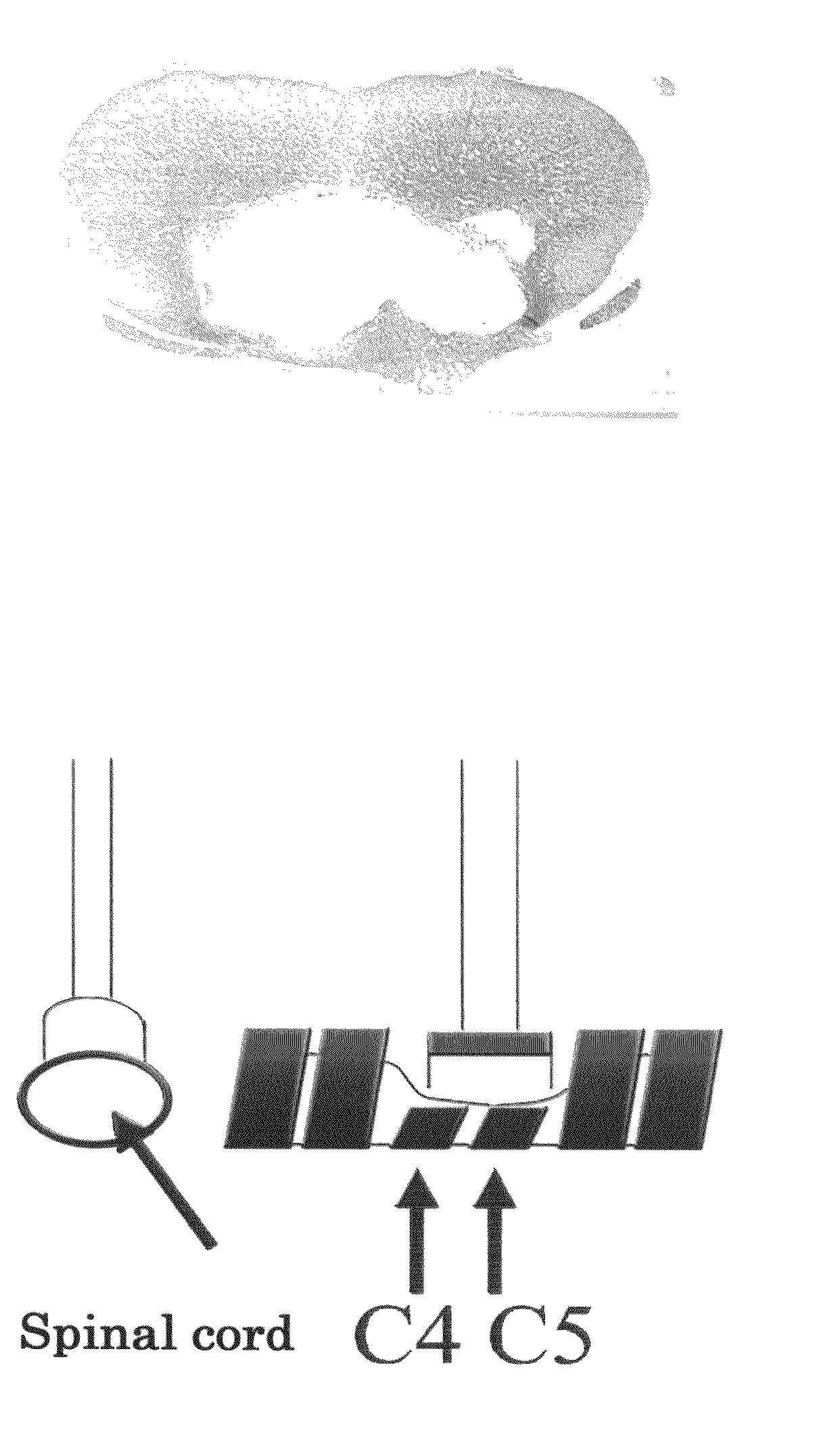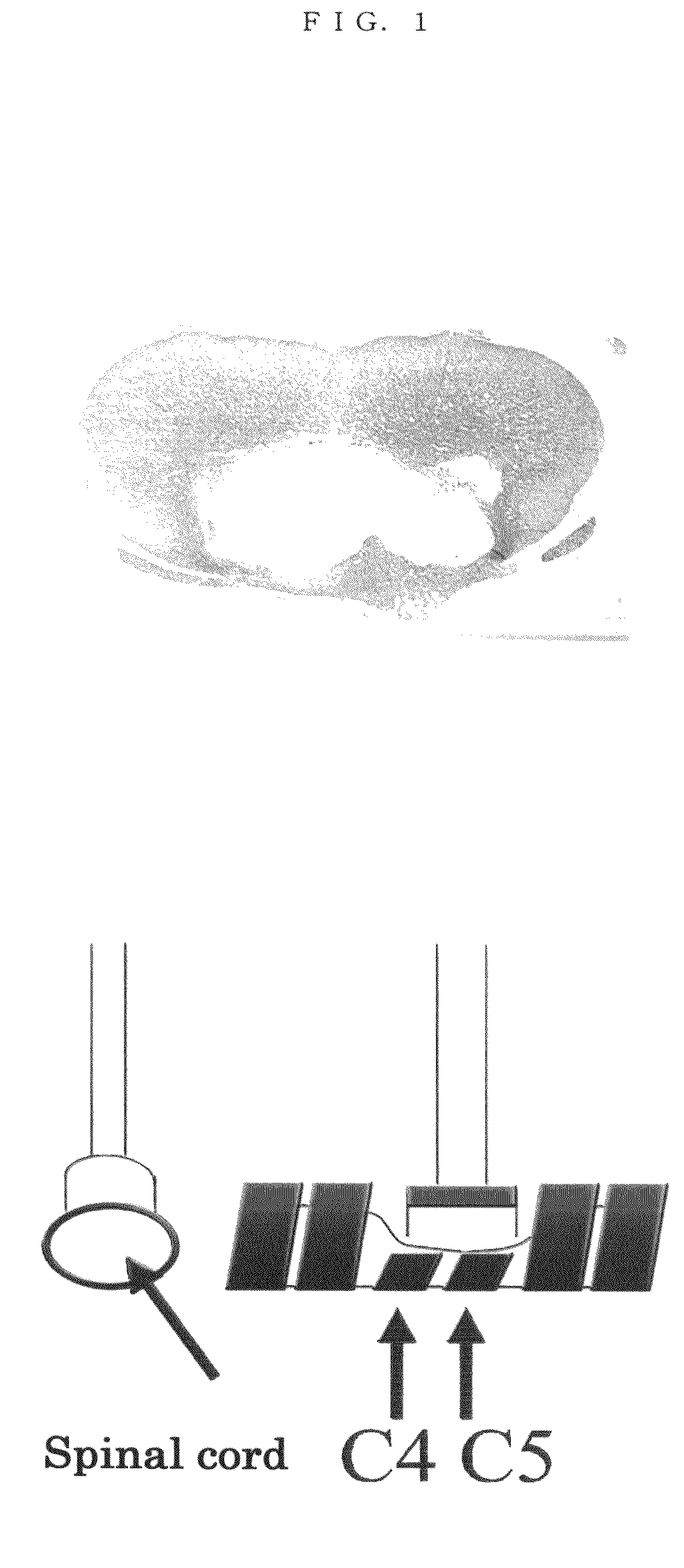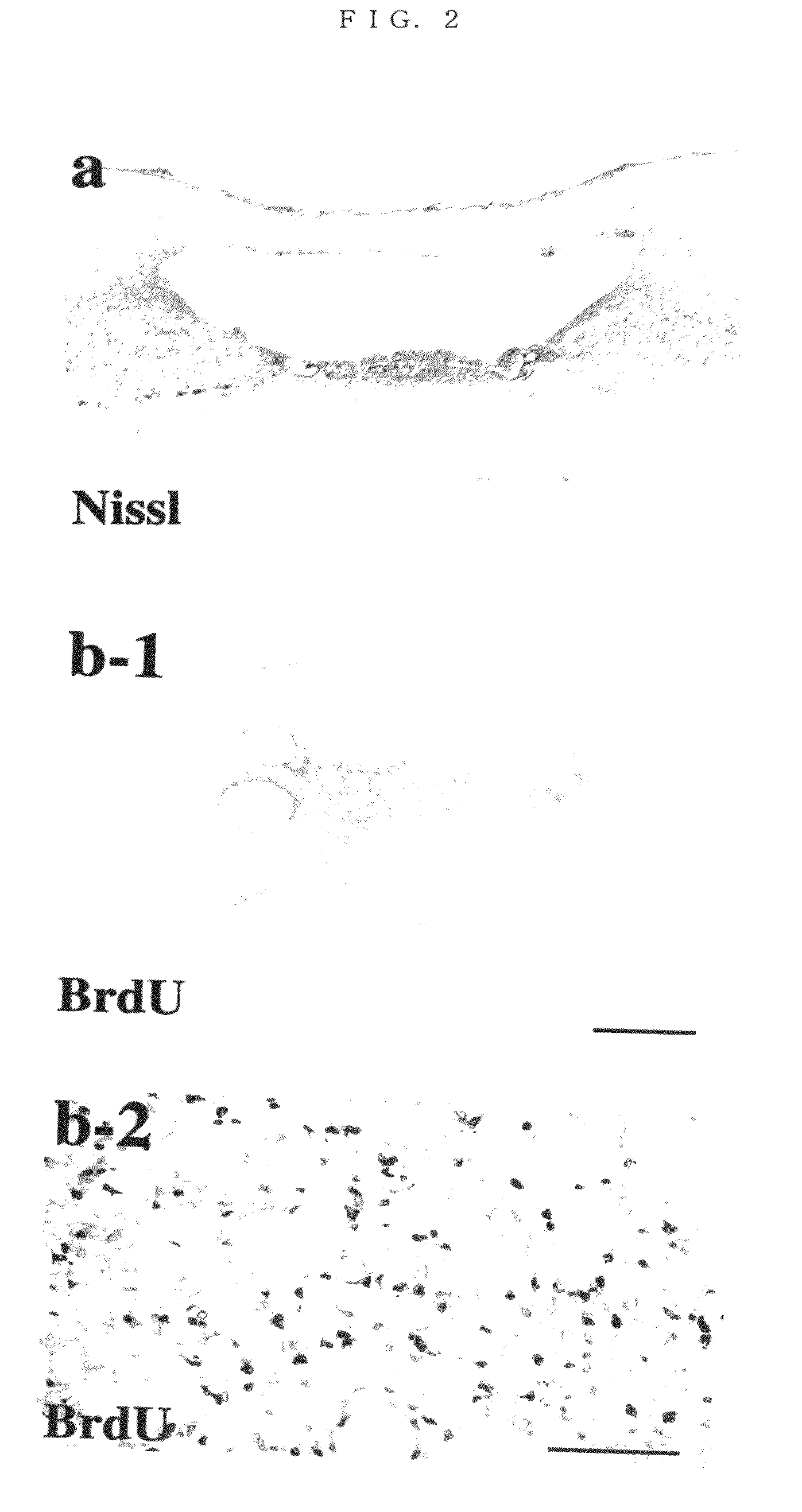Central nervous system neural progenitor cell which induces synapse-forming neurons in the spinal cord
a neural progenitor and spinal cord technology, applied in the field of central nervous system neural progenitor cells, can solve the problems of unobserved axons, undetermined therapy, and decreased protective function of spinal cord
- Summary
- Abstract
- Description
- Claims
- Application Information
AI Technical Summary
Benefits of technology
Problems solved by technology
Method used
Image
Examples
reference example 1
Preparation of Cells for Transplantation Derived from Fetal Rat Spinal Cords
[0022] Spinal cords were collected from Spraque-Dawley rat embryos at embryonic day 14.5 and were tripsinized according to usual methods. Cells were dispersed by pipetting, which were then cultured by Neurosphere method, a selective culturing method for neural stem cells. The culture as described above was performed using a non-serum DHEM / F12 medium containing a basic fibroblast growth factor (FGF-2) as a growth factor, with said cells floating cultured for a week at 37° C., and cell aggregates called Neurosphere, a cell population richly containing neural stem cells, were obtained. This Neurosphere was dispersed into individual cells one by one by pipetting, which was floating cultured again under the same condition to obtain Neurospheres. Said subculture was repeated for 2 to 4 times to obtain sufficient amount of neural stem cells for transplantation. The obtained cells were labeled with Bromodeoxyuridin...
reference example 2
Transplantation of Neural Stem Cells into Spinal Cord Injury Model Rats
[0023] Adult spinal cord injury model rats (female SD rats, body weight 200 to 230 g) were constructed using weight compression method according to Holtz et al. (Surg. Neurol. 31, 350-360, 1989). To be specific, adult spinal cord injury model rats were constructed by performing a laminectomy of the forth and fifth cervical vertebrae (C4, C5) and by compressing the spinal cord with a 35 g weight stationed on the high site of the forth and fifth cervical vertebrae from the dorsal spinal cord for 15 minutes (see FIG. 1: reference picture 1). Nine days after the injury, the neural stem cells were transplanted by injection of 30 μl of culture containing 5-10×106 / ml of neural stem cells obtained in the Reference Example 1, into a cavity occurred at the spinal cord injury site with a microsyringe under an operating microscope.
[0024] Five weeks after the transplantation, the transplanted rats were perfusion fixed with ...
example 1
Confirmation of the Induction of Neurons Derived from Transplanted Cells into Host Neural Network, in Transplant Experiments of CNS-NPCs Derived from Fetal Rat Spinal Cords into Spinal Cord Injury Model
[0026] Cells for transplantation derived from transgenic rats which express EYFP (enhanced yellow fluorescent protein) specifically in neurons, were prepared and transplanted in the same manner as in Reference Example 2. Five weeks after the transplantation, the spinal cord at the transplant site was collected. The above-mentioned transgenic rats expressing EYFP were constructed according to the method as described previously (Sawamoto et al. J. Neurosci. in press). Briefly, EYFPcDNA under the control of a 1.1-kb promoter factor of the Tα-1 tubulin gene expressed in the nervous system was purified by the method as described previously (J. Neurosci. 14, 7319-7330, 1994); this cDNA was microinjected into a pronucleus of a rat fertilized egg, which was then returned to a SD rat, a tenta...
PUM
| Property | Measurement | Unit |
|---|---|---|
| weight compression method | aaaaa | aaaaa |
| weight | aaaaa | aaaaa |
| weight compression method | aaaaa | aaaaa |
Abstract
Description
Claims
Application Information
 Login to View More
Login to View More - R&D
- Intellectual Property
- Life Sciences
- Materials
- Tech Scout
- Unparalleled Data Quality
- Higher Quality Content
- 60% Fewer Hallucinations
Browse by: Latest US Patents, China's latest patents, Technical Efficacy Thesaurus, Application Domain, Technology Topic, Popular Technical Reports.
© 2025 PatSnap. All rights reserved.Legal|Privacy policy|Modern Slavery Act Transparency Statement|Sitemap|About US| Contact US: help@patsnap.com



